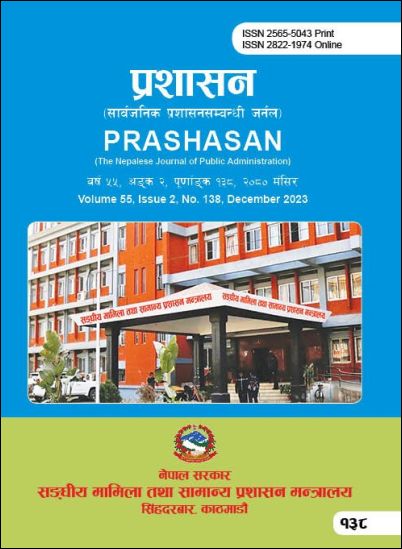Relationship between Capital and Recurrent Expenditure with GDP Growth in Nepal: An Autoregressive Distributed Lag (ARDL) Approach
DOI:
https://doi.org/10.3126/prashasan.v55i2.63543Keywords:
capital expenditure, revenue expenditure, gross Domestic Product, an Autoregressive Distributed Lag (ARDL), government of nepalAbstract
This study examines the relationship between Capital and Recurrent Expenditure with GDP Growth in Nepal. Employing a multivariate autoregressive distributed lag (ARDL) approach to the data from 1974 to 2020, the empirical findings reveal a strong long-run relationship between recurrent and capital expenditure with the nominal GDP. Interestingly, the impact of recurrent expenditure is higher than that of capital expenditure on GDP in the long run. However, the analysis highlights no clear short-run relationship. The weak short-term relationship observed may be due to the leakage of multipliers and the concentration of a major portion of expenses towards the end of the year. Consequently, the study calls for reforms in the implementation of the government budget, ensuring the even distribution of expenses throughout the fiscal year. Also, the government can increase the efficacy of its spending in the short run by pursuing policies that plug in the leakages of the spending multiplier. The outcomes of this research contribute to the broader discourse on the optimal allocation and implementation process of government resources and provide valuable insights for policymakers in Nepal seeking to bolster economic growth and development.
Downloads
Downloads
Published
How to Cite
Issue
Section
License
- The copyright of published materials of the journal remains with Ministry of Federal Affairs and General Administration.
- The published article cannot be reproduced or copied commercially by any person or institution but it can be used non-commercially for academic, research and training purpose providing proper citation is given.




